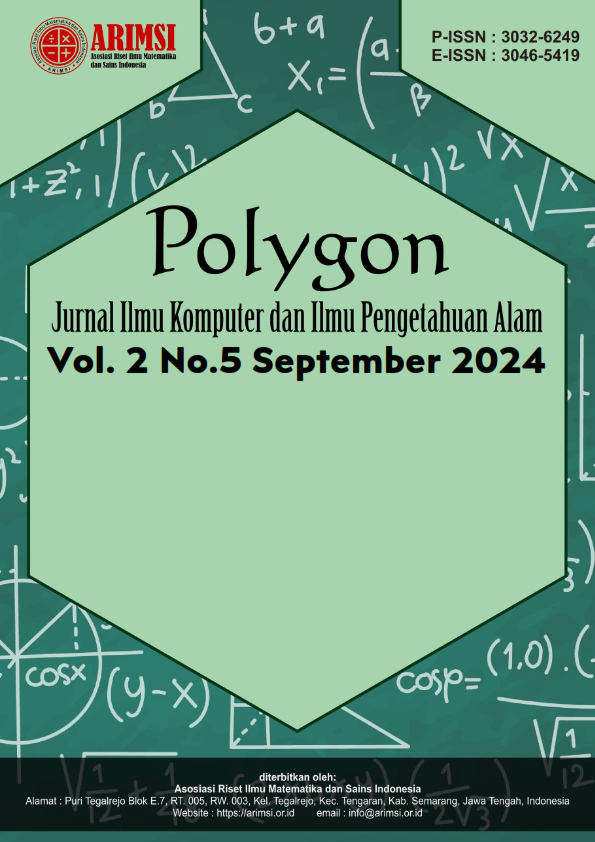Penerapan Metode K-Means Clustering untuk Pengelompokan Minat Konsumen terhadap Pengguna Jasa Layanan pada Kantor Pos Binjai
DOI:
https://doi.org/10.62383/polygon.v2i5.236Keywords:
K-Means Clustering, Consumer Interest Grouping, Service Industry, Binjai Post OfficeAbstract
This research aims to apply the K-Means Clustering method in grouping consumer interests regarding the use of services at the Binjai Post Office. The Post Office is part of a state-owned enterprise in North Sumatra Province with the main task of providing postal and logistics services. Postal services remain one of the most important means of communication, especially for sending packages, letters, and documents. However, with various services and diverse consumer needs, post offices can provide more effective and relevant services. The K-Means Clustering method is a classification technique based on machine learning algorithms used to identify patterns present in consumer interest data. The data used in this research includes various related variables, namely the type of delivery, total cost, and delivery time. The results of the clustering process conducted using 3 clusters indicate that there is a grouping of consumer data based on preferences for using delivery services. In group 1, there are (21 data points) with a centroid at coordinates (C1) 2; 4.3810; 3.5238. In group 2, there are (124 data points) with a centroid at coordinates (C2) 3; 2.0565; 3.1452. In group 3, there are (387 data points) with a centroid at coordinates (C3) 3.6925; 1.1370; 1.7209. This research shows that the application of K-Means Clustering can enhance the understanding of consumer interests and assist in the development of more targeted strategies to optimally meet needs.
Downloads
References
Buaton, R., Zarlis, M., & Yasin, V. (2021). Konsep Data Mining Dalam Implementasi.
Buaton, R., Zarlis, M., Efendi, S., & Yasin, V. (2019). Time Series: Data Mining.
Buulolo, E. (2020). Data Mining : Untuk Perguruan Tinggi.
Ghina, N., Laila, N., Istoningtyas, M., Ruza, M., Rasywir, E., Borroek, M. R., & Pratama, Y. (2022). Implementasi Algoritma K-Means Clustering Untuk Mengetahui Minat Pembeli di Agen Buah Melon Yudi. Jurnal Informatika Dan Rekayasa Komputer(JAKAKOM), 2(2), 254–262. https://doi.org/10.33998/jakakom.2022.2.2.116
Lutfi, M. A. K., & Nilogiri, A. (2019). IMPLEMENTASI ALGORITMA K-MEANS CLUSTERING UNTUK PENGELOMPOKAN MINAT KONSUMEN PADA PRODUK ONLINE SHOP. Universitas Muhammadiyah Jember.
Nasution, R. W., Kirana, I. O., Gunawan, I., & Sari, I. P. (2021). Penerapan Data Mining Untuk Pengelompokan Minat Konsumen Terhadap Pengguna Jasa Pelayanan Pada PT . Jalur Nugraha Ekakurir ( JNE ) Pematangsiantar. Resolusi, 1(4), 274–281.
Ridho, M. R. (2024). Pengertian Flowchart: Fungsi, Jenis, Simbol, dan Contohnya.
Sari, R. M. (2015). Prediksi Data Anggaran Pendapatan Belanja Daerah Menggunakan Algoritma K-Means. Sains Dan Teknologi Informasi, 1(2), 1–6.
Surapati, U., & Jannah, M. (2024). Penerapan Data Mining Menggunakan Metode K-Means Untuk Mengetahui Minat Customer Dalam Pembelian Merchandise Kpop. Jurnal Sains Dan Teknologi, 5(3), 875–884. https://doi.org/10.55338/saintek.v5i3.2739
Downloads
Published
How to Cite
Issue
Section
License
Copyright (c) 2024 Polygon : Jurnal Ilmu Komputer dan Ilmu Pengetahuan Alam

This work is licensed under a Creative Commons Attribution-ShareAlike 4.0 International License.





